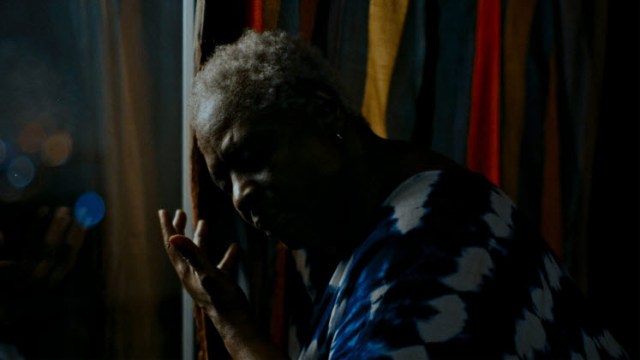
French film “Isadora’s Children” is a modest piece of work which calmly but profoundly explores personal artistic influences from Isadora Duncan, one of the most famous dancers in the 20th century. Through three different stories loosely connected together by one of Duncan’s notable works, the movie shows us how a piece of art can influence the lives of others in more than one way, and its several memorable key moments will linger on your mind for a while once it is over.
The common subject among the three stories in the movie is “The Mother”, which was created by Duncan as a farewell solo dance piece after the tragic death of her two young children in 1913. As reflected by the excerpts from her autobiography quoted throughout the film, “The Mother” was inspired by her devastating grief over her two children’s death and her following personal struggle to process that horrible tragedy, and it is certainly one of her distinguished legacies which remind us that she was too significant to be remembered only for her absurdly horrible death in 1927.
The first part of the movie starts with a young dancer by played by Agathe Bonitzer, who has been honing her dancing skill as getting herself accustomed to “The Mother”. We see her reading Duncan’s autobiography for understanding Duncan’s artistic inspiration and intention more, and we also observe her perusing a copy of the dance chart of “The Mother”, which is full of many different symbols probably representing painstaking instructions on how to move body parts on the stage.
Although the dancer does not speak at all even when she is with her boyfriend, we gradually come to sense her considerable artistic dedication while she seems to reach further to Duncan’s artistic intention. Mostly isolated and focused, she keeps practicing for improving herself more and more, and then there comes a sort of breakthrough when she comes to embody what Duncan hoped to express through her delicate choreography.

And then the movie moves onto the second story, which mainly revolves around a middle-aged dance teacher played by Marika Rizzi and a young girl played by Manon Carpentier. Despite her congenital mental disability, the young girl is willing to perform “The Mother” on the stage a few weeks later, and her teacher generously guides and coaches her as imparting her knowledge to the young girl from time to time.
The young girl is pretty clumsy at first, but then, just like the dancer in the first story, she comes to find her own way of understanding and embodying the choreography of “The Mother”, and her teacher tenderly encourages this process. At one point, they click so well with each other during another training session of theirs that we can clearly sense their developing connection even when they are out of the sight of cinematographer Noé Bach’s camera, which remains static as usual in 1.33:1 screen ratio.
The mood becomes a little more playful when the young girl and her teacher later go to a beach just for having some break. As they are later resting on the beach, her teacher reveals a bit of her private life to the young girl, and we are reminded again of the teacher’s deep care and affection toward the young girl. It is implied that she has been lonely since her own children moved onto each own life, and the young girl certainly feels like another child coming into her life.
Eventually, the young girl comes to arrive at a moment of perfection as she practices more, and that is followed by a quiet but sublime moment between her and her teacher, but director/writer/co-producer Damien Manivel deliberately focuses on the audiences instead when the young girl finally performs on the stage. As the camera moves from one audience to another, we see how much they are emotionally affected by the performance on the stage, and this restrained but powerful moment will definitely make you reflect more on the positive influence of art on our lives.

At the end of this unforgettable moment, the camera lingers a bit longer on the face of an old black lady played by Elsa Wolliaston, who is visibly moved a lot by what she is watching from the stage. The third part of the movie patiently follows her as she is slowly returning to her apartment after the end of the performance, and, after she arrives at her residence, we come to learn why the performance touches her so much.
I will not go into details here, but I can tell you instead that I was caught off guard by an unexpected moment of poignancy ignited by one simple body movement. As the camera intensely observes the old black lady slowly executing one physical movement after another, we come to sense more of her personal history even though she does not say anything at all, and that surely exemplifies the timeless qualities of “The Mother”.
While requiring a considerable amount of patience right from the beginning as a dry and austere arthouse movie, “Isadora’s Children” is worthwhile to watch for its thought-provoking exploration on art and life, and I admire the subtle and thoughtful handling of its main story subject. I was baffled and impatient at first, but then it engaged me more than I expected, and I think you should give it a chance, especially if you are ready for something different and challenging.







